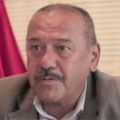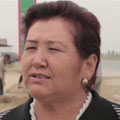The World Bank Communications Team in the Kyrgyz Republic offers this story.
Fast, efficient roads bring people, produce and even fresh ideas from region to region, from country to country. In a stretch of the southwestern Kyrgyz Republic, even the construction work on a refurbished road is generating new opportunities and a sense of optimism.
Arsen Minbaev, for example, has opened a gasoline station simply in the expectation that a newly refurbished road will bring business his way. This is an isolated corner of the country, and nowadays, about 5,000 cars and trucks a day use the road, but Minbaev believes that number is sure to increase.
Linking 18% of the Population
Refurbishing this highway is of crucial importance to the 18% of the Kyrgyz population who depend on it. Many of those living near the road are among the poorest in the country. For just over 350 kilometers, the road winds its way through the Ferghana Valley, linking small villages and towns with Osh, the second largest city in the country. The road, called the Osh-Batken-Isfana highway, is one of the country’s six strategic road corridors. But it was in terrible shape.
Fixing the road is a Kyrgyz government priority. The new road, built with support from the World Bank, allows trucks to carry produce from the fertile south to northern markets. Shorter stretches mean patients can get safely to hospitals and children to school.
In hot months, the rutted and jarring old road sent clouds of harmful dust over nearby villages. In the winter, cars and ambulances got stuck in the mud. The new road cleared the dust and nowadays patients can get care on the way to the hospital, instead of simply trying to survive the ride. "Today roads are in better condition, in the past they were not like this and during a bumpy drive you could puncture veins. But not anymore," says Rasul Samidinov, an ambulance medical assistant.
"There is so much hope for this road construction," says Minbaev. "Farmers will be able to take their produce to market quickly and under better conditions. Health clinics and hospitals will come closer."



